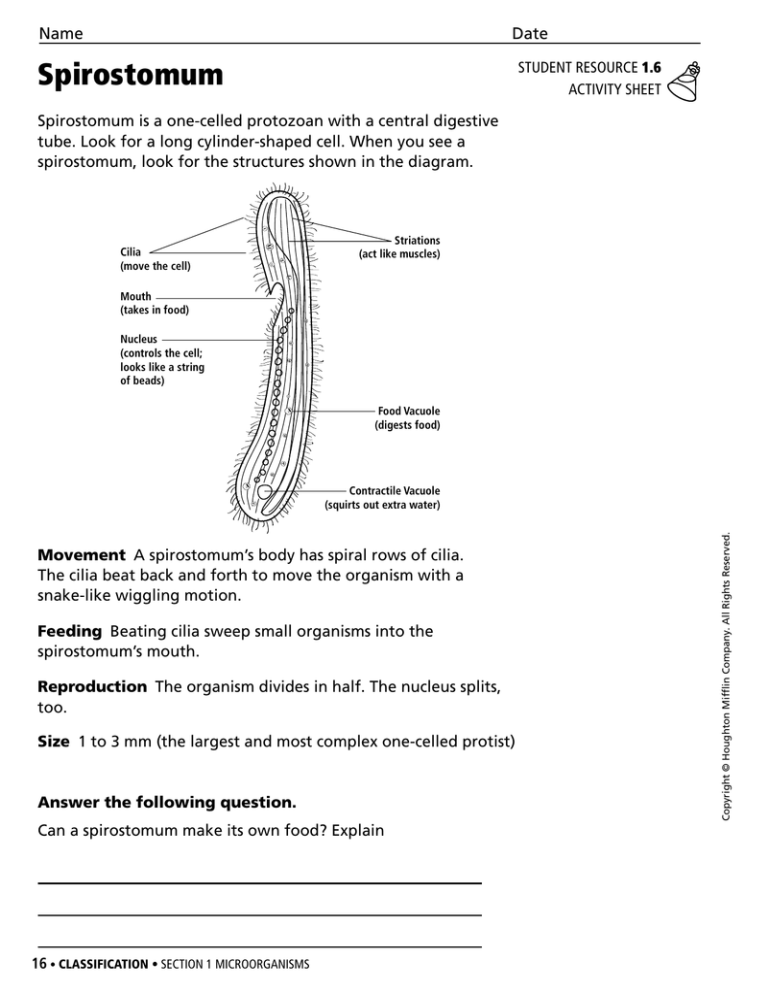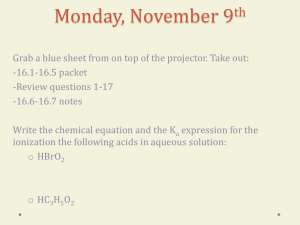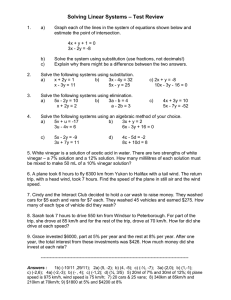
Name
Date
STUDENT RESOURCE 1.6
ACTIVITY SHEET
Spirostomum
Spirostomum is a one-celled protozoan with a central digestive
tube. Look for a long cylinder-shaped cell. When you see a
spirostomum, look for the structures shown in the diagram.
Cilia
(move the cell)
Striations
(act like muscles)
Mouth
(takes in food)
Nucleus
(controls the cell;
looks like a string
of beads)
Food Vacuole
(digests food)
Movement A spirostomum’s body has spiral rows of cilia.
The cilia beat back and forth to move the organism with a
snake-like wiggling motion.
Feeding Beating cilia sweep small organisms into the
spirostomum’s mouth.
Reproduction The organism divides in half. The nucleus splits,
too.
Size 1 to 3 mm (the largest and most complex one-celled protist)
Answer the following question.
Can a spirostomum make its own food? Explain
16 • CLASSIFICATION • SECTION 1 MICROORGANISMS
Copyright © Houghton Mifflin Company. All Rights Reserved.
Contractile Vacuole
(squirts out extra water)
Name
Date
STUDENT RESOURCE 1.7
ACTIVITY SHEET
Volvox
Volvox are one-celled algae that live together in a colony. The
colony is a hollow ball with 500 to 20,000 individual cells. Look
for rolling green balls on the slide. When you see a volvox colony,
look for the structures shown in the diagram.
Flagella
Daughter colony
Copyright © Houghton Mifflin Company. All Rights Reserved.
Individual cell
Movement Each volvox cell has two flagella. The flagella beat
together to roll the ball through the water.
Feeding Volvox cells have chlorophyll and make their own food
by photosynthesis.
Reproduction Daughter colonies are small, dark green balls
inside the volvox colony. When the daughter colonies mature, the
parent ball bursts open and releases the daughter colonies.
Size 350 to 500 µm (Two or three volvox cells would fit in 1 mm.)
Answer the following question.
Volvox cells have eyespots that sense light. How do the eyespots
help volvox survive?
CLASSIFICATION • SECTION 1 MICROORGANISMS • 17
Name
Date
STUDENT RESOURCE 1.8
ACTIVITY SHEET
Hydra
A hydra is a many-celled animal. The cells are in two layers. The
inside of the animal is hollow. Look for white stringy objects
attached to the sides and bottom of the jar. When you see a
hydra on the slide, look for the structures shown in the diagram.
Mouth
Tentacles
(used for moving and
feeding)
Bud
(a new hydra)
Movement A hydra can stay in one place, glide on its base, or
somersault using its tentacles.
Feeding A hydra stuns small organisms by shooting out stinging
cells on its tentacles. Then the tentacles grab the food and stuff it
into the mouth.
Reproduction A hydra grows a bud of cells on the outside of its
body. When the bud develops into a small hydra with tentacles, it
falls off and swims away.
Size 10 mm
Answer the following question.
Where do you think a hydra digests its food?
18 • CLASSIFICATION • SECTION 1 MICROORGANISMS
Copyright © Houghton Mifflin Company. All Rights Reserved.
Base
(attaches to an object)
Name
Date
STUDENT RESOURCE 1.9
ACTIVITY SHEET
Vinegar Eels
A vinegar eel is a many-celled animal. Vinegar eels are also called
nematodes or roundworms. They are easy to find wiggling in the
vinegar culture jar because they are always moving. When you
see a vinegar eel on the slide, look for the structures shown in
the diagram.
Digestive system
Copyright © Houghton Mifflin Company. All Rights Reserved.
Mouth
Anus
Movement A vinegar eel moves with a whip-like motion.
Muscles that run along the sides of the worm make the body
whip back and forth.
Feeding Vinegar eels feed on the acid-loving bacteria that make
vinegar from fermented apple juice. Vinegar eels are adapted to
living in acid.
Reproduction Male vinegar eels produce sperm. Female vinegar
eels produce eggs. A sperm and an egg combine and grow into a
new vinegar eel.
Size 2 mm or larger
Answer the following question.
What is the path of food in a vinegar eel?
CLASSIFICATION • SECTION 1 MICROORGANISMS • 19






